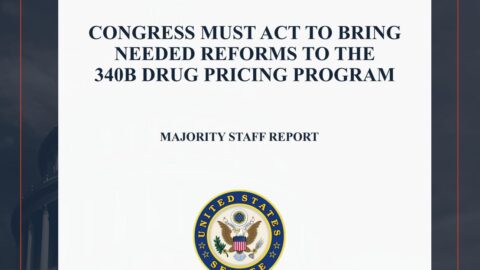So, the plan this morning was to give an exhaustive breakdown of all of the comments and commentary about the Biden administration’s move to set a path for using march-in rights, via the Bayh-Dole Act, to break the patents on high-priced medicines.
But I have to be honest: everyone — industry folks, pharma skeptics, academics — seem to have come to the same conclusion: this is all performative.
It’s kayfabe, to borrow a word that Antonio Ciaccia taught me.
If you want a list of reactions, I’m happy to provide it, but that’s not going to shed too much light on the subject. (Just go read the STAT story, which is kind enough to quote me, or this Endpoints piece.)
You probably should see how the White House framed it, though. Not because it’s compelling, but because it’s evidence of how much spin the administration is willing to apply here. (Or, as Northwestern’s Craig Garthwaite put it, “An embarrassing word salad of economic talking points.”)
Anyway: the policy itself — captured in this RFI published in the Federal Register yesterday — is worth looking over (just control-F for the word “price” to get the good stuff. It shows how limited the actual execution of the policy might be. There are a lot of hurdles suggested, which is probably why a lot of the administration’s ideological allies were disappointed.
If you’re really into this, read down to the bottom of the RFI, which outlines eight “scenarios” where expanded Bayh-Dole might be used . Weirdly, not a single scenario focuses on a high-priced medicine, which suggests yet another pulled punch. When push came to shove, the administration didn’t even want to tease a hypothetical example of how it might break a patent.
So, yeah: kayfabe.
Boy, have I ever been whiny about how CMS has conducted the “patient-focused listening sessions” around the IRA’s price-control efforts. One of the specific elements that sticks in my craw is that CMS has made the 100 or so speakers invisible: there’s no recording of the sessions, and — with the exception of my transcription project — no permanent record of what happen.
Well, the good news is that CMS said it will release its own transcripts.
In February.
After redaction. (Why? Who knows.)
To be clear, I’m not mad here because I think that transparency in this instance is vital to good policymaking. It’s more about the symbolism of the whole endeavor.
Does CMS want to elevate or suppress patient voices and patient feedback? Right now, it sure feels like the latter.
Americans generally want politicians to err on the side of policies that incentivize — not discourage innovation — a reality supported by a new Morning Consult poll from BIO that shows most Americans want the ORPHAN Cures Act and are willing to give their vote to politicians who feel the same way.
This is a nice bit of journalism from Ed Silverman at STAT on how the FDA and the Patent and Trademark Office are — and are not — working together to create a more unified regulatory regime around drug patents.
The story of Rising Pharmaceuticals and their lead-poisoning drug (an older product re-introduced this year at a far higher price) is not going away. CNN, which broke the story, flagged that Sen. Amy Klobuchar is asking the company some pointed questions about its pricing behavior.
This study on the cost-savings of the IRA, amplified by Axios, is a pretty lousy piece of work, methodologically. It’s really hard to talk about the price of medicines without acknowledging the role of rebates. This analysis tried to do that, but it used overly broad, massively out-of-date rebate figures to come to its conclusions. The best way to read these kind of analyses is to tackle the “methodology” section first. If that doesn’t prompt uncontrollable eye-rolling, you can read the rest.
Politico has some coverage of a industry group — Partnership for the U.S. Life Science Ecosystem — pushing back on the FTC’s approach to mergers, but I can’t tell if the story is any more advanced than when we talked about it here back in early October.
Mother Jones has a story about orphan drugs, with a particular focus on what happens when drugs originally intended for a small population win approval in larger indications. It’s Mother Jones, so you probably have some sense of the piece’s conclusions.
If this email was forwarded to you, and you’d like to become a reader, click here to see back issues of Cost Curve and subscribe to the newsletter.




